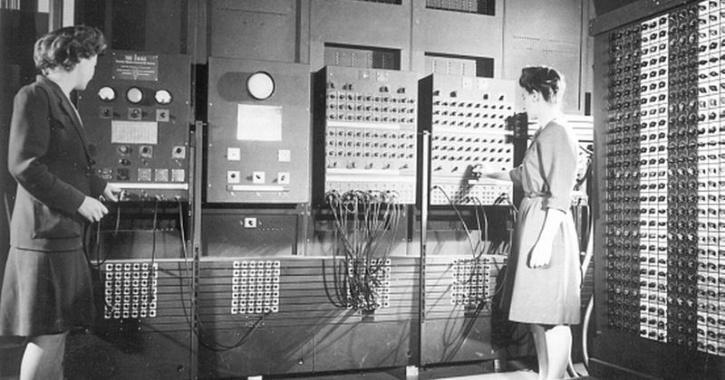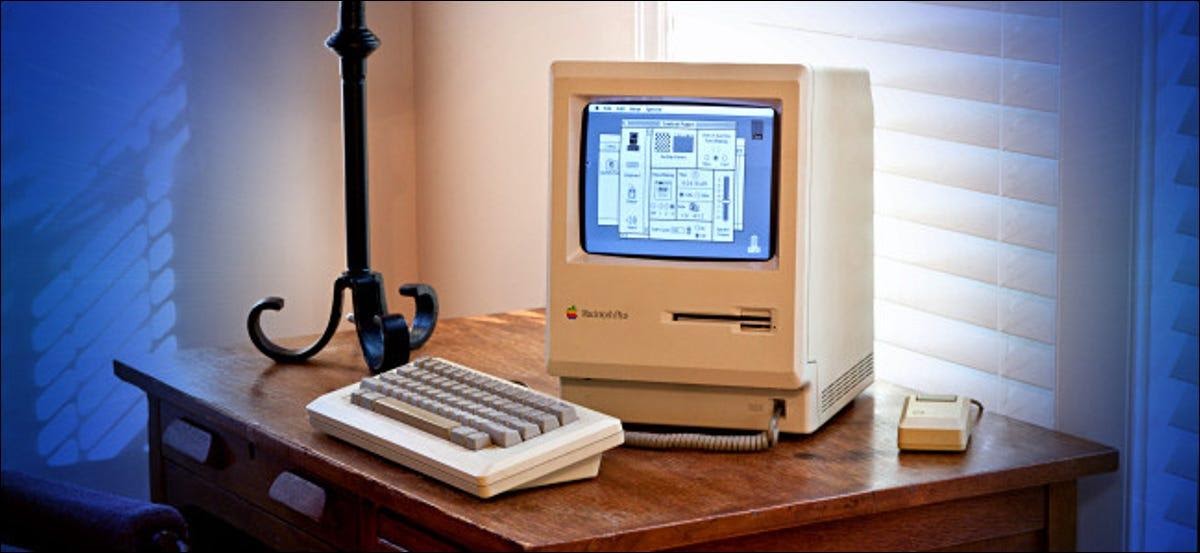Vintage computers set the stage for today’s digital world, which simply means you could never experience today's computer peripherals if the computer was not invented and launched back in late 1940.
Today’s multifunctioning computers, laptops, Android tablets, iPads, and all computing devices we have are the results of years of hits and trials and many phases of the development of technology through generations. Digital computers have been through ages of modifications to reach the miraculous form today. Still, the advancement continues to grow in the future. Before we move on to see where it all began, first let's have a look at what exactly is a digital computer?
What is a digital Computer?
Today most of you know the concept of a digital computer. For your clarity, I should share that It is a device that processes information to solve problems. It requires data to operate which is expressed in binary digits i.e 0 and 1.
By counting and manipulating these two digits, a computer can perform a wide variety of tasks and operate different types of machines, analyze business data, store data, and help in scientific research.
Development of Digital World after vintage computer
The digital computer has been developing at a fast rate since the development of the Harvard Mark in 1944. Charles Babbage is known for having designed the first digital automatic computer.
ENIAC was the first high-performance electronic computer. The succession of developments in computer equipment is frequently split into generations, with a group of machines that share a similar technology representing each generation.
The first practical program-controlled calculating machine was completed in 1941 by Konrad Zuse, a German engineer working in virtual isolation from advances elsewhere (Z3).
The work of the English mathematician and logicist George Boole was of huge value in the advancements in the digital system. The development of logic circuitry has been led by the development of vacuum tubes in the late 1940s and early 1950s and led to the creation of the Sinclair Z80 in the 1960s and the PC in the 1980s.
The First Generation
The first generation period was from 1946-1959. Vacuum tubes are used as fundamental components for the CPU (central processing unit) in first-gen computers. These tubes were generating a lot of heat, and thus the installations used to fuse regularly.
So, these computers were very costly and only mega businesses were able to afford them. In that era, the batch processing operating system was primarily used. As input and output tools punch cards were designed to use for data transferring.
Paper tape and magnetic tape were also introduced to transfer data on vintage digital computers. Machine code was used as the scripting language for the computers of that time. The vintage computer is entirely different from the computing machines we use today.
Some vintage computers of this generation were;
ENIAC
EDVAC
UNIVAC
IBM-701
IBM-650
Top 3 vintage computer that set the stage for today’s digital world
ENIAC

An all-electronic computing machine was proposed by physicist John Mauchly in 1942. At that time, the U.S. Army wanted complex wartime ballistics tables to be determined, this machine served useful for them. It was simply turning and able to solve "a great number of arithmetic operations" by reprogramming.
On February 15, 1946, ENIAC was publicly introduced at the University of Pennsylvania and was regarded by the press as a "Giant Brain '' which gives us sight into how advanced this basic device was considered at that time, imagine what they would have named today’s touch screen gadgets!
ENIAC (Electronic Numerical Integrator And Computer), designed between 1943 and 1945, was the first large-scale computer to work at electronic speed without any mechanical elements slowing down. ENIAC may have been performing more computations for a decade, before a lightning strike in 1955, than all humankind had done up to that time. ENIAC used to lose one or two vacuum tubes almost every day. It was difficult to find and replace the lost one with almost 18,000 tubes.
Over time, however, the repair team only gained the ability to solve an issue in 15 minutes. To optimize reliability, engineers created specific circuit design guidelines. They carried out thorough research on components and stopped pressing them to their limits, including working vacuum tubes to extend their lives well below their highest voltages. The ENIAC was massive. They shared the Moore School's 50-by-30-foot (15-by-9-meter) basement, where their 40 U-shaped panels were arranged around three walls. Every panel was about 2 feet wide, 2 feet deep, and 8 feet high (0.6 meters by 0.6 meters by 2.4 meters).
EDVAC

The successor to ENIAC was the Electronic Discrete Variable Automatic Computer (EDVAC), and it was one of the first stored-program machines with program instructions in memory. It was made by Mauchly and Eckert, who were also the manufacturers of ENIAC. This computer was able to keep in memory every program that has been introduced to it. Since EDVAC was going to have more storage than any other machine to date, it was not less than a miracle.
The concept was that provided a mercury tube, an electrical pulse could be bounced back and forth to be regained at will—other two-state devices for 0s and 1s storage. This on/off memory switchability was necessary because binary rather than decimal numbers was to be used by EDVAC, simplifying the design of the arithmetic units. EDVAC has processed mathematical tasks with a serial memory size of approximately 5.5 kB as a binary serial computer.
Magnetic tape was used by EDVAC as a data medium that could run for 20 hours a day. It had an area of 490 ft2 (45.5 m2) and weighed 17,300 pounds (8.7 short tons; 7.8 t). The Ballistic Research Laboratories Electronic Science Computer (BRLESC), having a greater memory and quicker response times, replaced EDVAC in 1961. Today we are lucky that we have computers like the best laptops of every budget out there on the market as mentioned on techprogeek. Some of these machines include the best gaming laptops .
IBM 701

The first IBM computer, The 701 was introduced in 1952 and was developed for experimental work and analysis, leading to the development of the programming language FORTRAN. There were nineteen machines installed, a record volume in that period for such a computer. Its internal memory featured 2,048 36-bit electrostatic memory words and 8,192 magnetic drum memory words. The 701 used magnetic recording tapes and was one of the first devices to use magnetic tapes based on plastic instead of metal.
It comes with four magnetic tape drives supported by a memory unit. Also, the magnetic drum is there to make the whole combination keep working. The IBM 701 used a cathode ray tube as a storage unit to save the data in its memory. Besides that, the IBM 701 also consisted of L-shaped arithmetic to support the whole combination. The control unit was installed with a punched card reader for data transfer. IBM 701 introduced three power units to operate and function smoothly.
More than 16,000 additions or subtractions per second were made, 12,500 digits per second were read from tape, 180 letters or numbers per second were written, and 400 digits per second were created from punched cards. Defense Calculators were the key feature of this machine. It was an electronic gadget that altered civilization by making mathematics even simpler. It was an electronic computer that was massive and needed a whole room to fit in. Now we’re in the world of portability and dealing with the best 10-inch tablets today. Tech has changed a lot.





